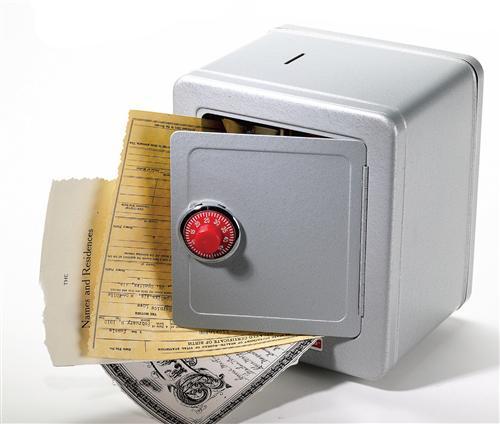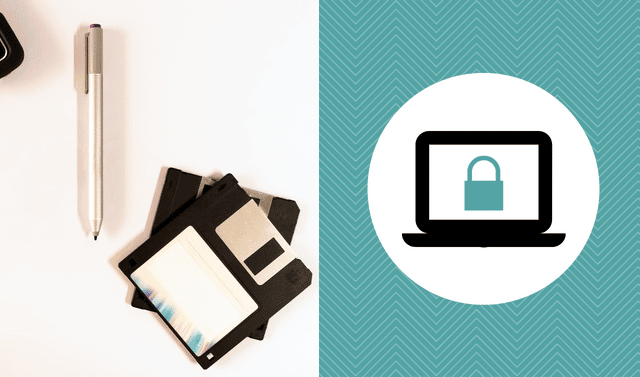
Backing up your computer files may seem like a chore, but it’s clearly an important one. And 1.44MB “floppy” disks are entirely inadequate for storing copies of the gigabytes of files you’ve accumulated. But if you have the right tools, the process will go smoother and you’ll be more likely to back up your files regularly. Here’s an overview of your primary options for protecting data.
Compact class
Probably the most popular backup medium, inexpensive compact discs (CDs) hold up to 700MB. To save files to CDs, you need a CD-RW drive, backup software and blank CDs.
These days, even the cheapest computers usually come with a CD-RW drive. If you have an older computer, you can buy an internal CD-RW drive for about $40 or an external one for about $80. An external CD-RW drive works with a laptop and is easy to connect and disconnect, so you can use it with more than one computer.
New computers and CD-RW drives often come with programs for “burning” (writing files to) CDs, or you can buy the software separately. Roxio’s $99.95 Easy Media Creator 7 <www.roxio.com> has tools for burning discs, enhancing photos, editing video and organizing digital files.
Blank CDs come in two varieties: CD-R and CD-RW. CD-Rs (Compact Disc — Record-able) only let you save data — you can’t edit or delete files once they’re on a CD-R — but the discs cost less (typically 30 to 45 cents each). Electronics superstores often offer them for free after a mail-in rebate. CD-RWs (Compact Disc — Rewritable) can be erased and reused, but they cost more (about 60 cents each). CD-RWs and cheap CD-Rs work fine for routine backups, but you’re better off using brand-name CD-Rs for archival storage.
Video channels
If you store a lot of digital photos or videos on your computer, you might need several CD-Rs to back up all the files. Save yourself some time by backing up to a digital video disc (DVD), which stores 4.7GB — about six and a half times as much as a CD. The new double-layer DVDs have nearly twice that capacity (8.5GB). Recordable DVD drives can read and record CDs, too.
Prices on both DVD burners and media have plummeted. You can find an internal DVD recordable drive for about $100 and an external drive for about $200. New midrange PCs priced under $800 typically come with a DVD±RW drive, which supports all types of DVD formats. A blank 4.7GB DVD costs only about 70 cents, but a blank 8.5GB DVD will set you back about $10.
Hard choices
Writing CDs or DVDs is simple, but backing up to an external hard drive is even easier. You don’t need to use special CD-burning software or juggle multiple discs; just copy files to the external hard drive. If your main hard drive fails, simply use the external drive to pick up where you left off.
External hard drives usually come with backup software. The $129.99 Western Digital 80GB External USB 2.0 Hard Drive <www.wdc.com> lets you back up your files manually or set up automatic backups. The $300 Maxtor OneTouch II 300GB External Hard Drive <www.maxtor.com> comes with Dantz Retrospect Express software, which will back up your entire hard drive with just one push of the button. You can recover individual files and retrieve deleted files. Should your original hard drive fail, you can roll back the system to a healthy state.
Zip tips
To play it safe, you should store your backups at a different site than your computer — and removable disk drives make that easy. Iomega Zip drives <www.iomega.com/zip>, in 100MB ($80) and 250MB ($130) models, were very popular before prices for CD-RW drives and large hard drives dropped. But at about $10 for 100MB disks and about $11.25 for 250MB disks, blank Zip media cost much more per megabyte than CDs, DVDs and external hard drives. Still, Zip disks let you back up important files or move them between computers quickly and easily.
Automatic flash
Removable flash drives, the latest backup technology, have to be the handiest little gadgets to come around in years. About the size of your thumb, a flash drive connects to your computer’s USB port. Just plug it in and voilà! You have a new hard drive. Though they usually don’t have enough capacity to copy your computer’s entire contents, flash drives work nicely for backing up your current work.
They’re also ideal for transferring files between computers. Keep one on a key chain or on a cord around your neck so you always have it handy. My local public library has super-fast Internet access, so I like to search online census records, newspapers and books there. Instead of printing the pages, I save them to a flash drive. There’s no charge, and I can go home and view the images on my own computer and edit them, if necessary, to improve legibility. Some facilities, such as the Salt Lake City-based Family History Library <www.familysearch.org>, have photocopiers that let you save images to a flash drive or CD rather than printing paper copies.
Flash drives range in price from about $30 for a 128MB model to about $80 for a 512MB one. A SanDisk Cruzer Mini 256MB USB 2.0 Flash Drive <www.sandisk.com> costs $40 — and it’s just 3 inches long, ¾ inch wide and about ? inch thick.
Cyber solutions
For another off-site backup option, consider the Web: You can save copies of your files to an Internet server. For example, Family Tree Legends software <www.familytreelegends.com>, notable for several innovative features, automatically creates an online backup of your data. If your family file becomes corrupted, just download your backup.
Users of other genealogy programs can opt for a mainstream online backup service, but they’re pricey — and feasible only if you have high-speed Internet access. The annual fee for backing up 50MB is $24.95 at Iomega IStorage Online <www.iomega.com/storage>. That’s not bad, but if you need more space, the rates rise fast. Iomega IStorage Online charges $179.95 for 1GB; IBackup <ibackup.com> charges $199.50 for 10GB. For those prices, you could buy an external hard drive that would hold a lot more data.
With so many choices, how do you pick the best backup option for you? We recommend a combination of these methods. You could make monthly backups of all your data files to a CD or DVD and daily backups of critical files to a flash drive. And remember: No matter what medium you choose, it’s no good unless you actually use it. Set up a schedule and stick to it. Store your monthly backups off site and occasionally try to restore the files to ensure they work. This all takes time, but the peace of mind that comes with knowing that your family history files are secure makes it all worthwhile.
Contingency Planning
Generally, you should back up any files you created, such as family files, word processing documents and scanned pictures. You don’t need to back up programs, as long as you can reinstall them from CDs. If you downloaded the programs from the Internet, be sure to back up the installation files. To ease the process, keep all your data files in the same location on your computer, such as the My Documents folder in Windows, or for Mac users, the Documents folder or Macintosh HD.
Extra Protection
Can’t remember to copy your files? Backup software automates the process and even lets you schedule unattended backups. Windows XP includes backup software, but it’s not installed by default if you have the Home edition. To install the program, insert your Windows CD. Find the folder ValueaddMSFTntbackup and run the file NTbackup.msi. To use the program, go to the Start menu and choose Accessories>System Tools>Backup.




